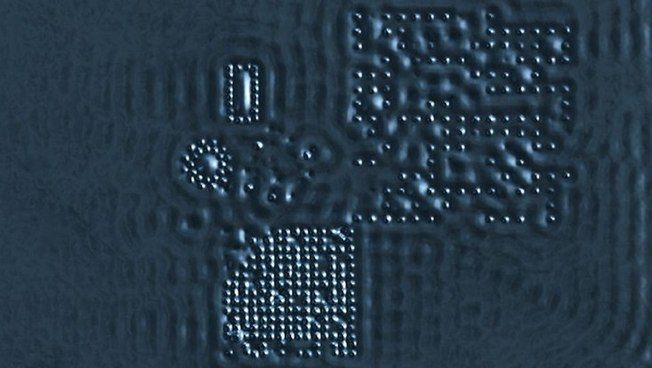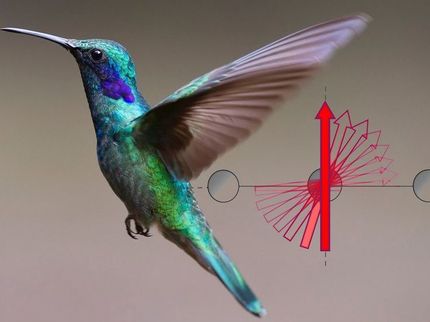Pairing of electrons in artificial atoms discovered
Advertisement
Researchers from the Department of Physics at Universität Hamburg, observed a quantum state that was theoretically predicted more than 50 years ago by Japanese theoreticians but so far eluded detection. By tailoring an artificial atom on the surface of a superconductor, the researchers succeeded in pairing the electrons of the so-called quantum dot, thereby inducing the smallest possible version of a superconductor. The work appears in the latest issue of the journal “Nature”.

3D view of some of the structures built atom-by-atom from silver (small hillocks). A rectangular and a circular electron cage are seen in the top left quarter of the image
Lucas Schneider
Usually electrons repel each other due to their negative charge. This phenomenon has a huge impact on many materials properties such as the electrical resistance. The situation changes drastically if the electrons are “glued” together to pairs thereby becoming bosons. Bosonic pairs do not avoid each other like single electrons, but many of them can reside at the very same location or do the very same motion.
One of the most intriguing properties of a material with such electron pairs is superconductivity, the possibility to let an electrical current flow through the material without any electrical resistance. For many years, superconductivity has found many important technological applications, including magnetic resonance imaging or highly sensitive detectors for magnetic fields. Today, the continuous downscaling of electronic devices heavily fosters investigations how superconductivity can be induced into much smaller structures at the nanoscale.
Researchers from the Department of Physics and The Cluster of Excellence “CUI: Advanced Imaging of Matter” at Universität Hamburg, have now realized the pairing of electrons in an artificial atom called quantum dot, which is the smallest building block for nanostructured electronic devices. To that end, experimentalists led by PD Dr. Jens Wiebe from the Institute for Nanostructure and Solid State Physics locked the electrons into tiny cages that they built from silver, atom-by-atom.
By coupling the locked electrons to an elemental superconductor, the electrons inherited the tendency towards pairing from the superconductor. Together with a team of theoretical physicists of the Cluster, led by Dr. Thore Posske, the researchers related the experimental signature, a spectroscopic peak at very low energy, to the quantum state predicted in the early 70ies of the last century by Kazushige Machida and Fumiaki Shibata.
While the state has so far eluded direct detection by experimental methods, recent work by researchers from the Netherlands and Denmark show it is beneficial for suppressing unwanted noise in transmon qubits, an essential building block of modern quantum computers. In a private Email communication, Kazushige Machida wrote to the first author of the publication, Dr. Lucas Schneider: “I thank you for ''discovering'' my old paper a half century ago. I thought for long time that transition metal non-magnetic impurities produce the in-gap state, but the location of it is so near the superconducting gap edge, thus it is impossible to prove its existence. But by your ingenious method you have finally checked it to be true experimentally”.
Original publication:
Lucas Schneider, Khai That Ton, Ioannis Ioannidis, Jannis Neuhaus-Steinmetz, Thore Posske, Roland Wiesendanger, and Jens Wiebe: Proximity superconductivity in atom-by-atom crafted quantum dots, https://doi.org/10.1038/s41586-023-06312-0



























































